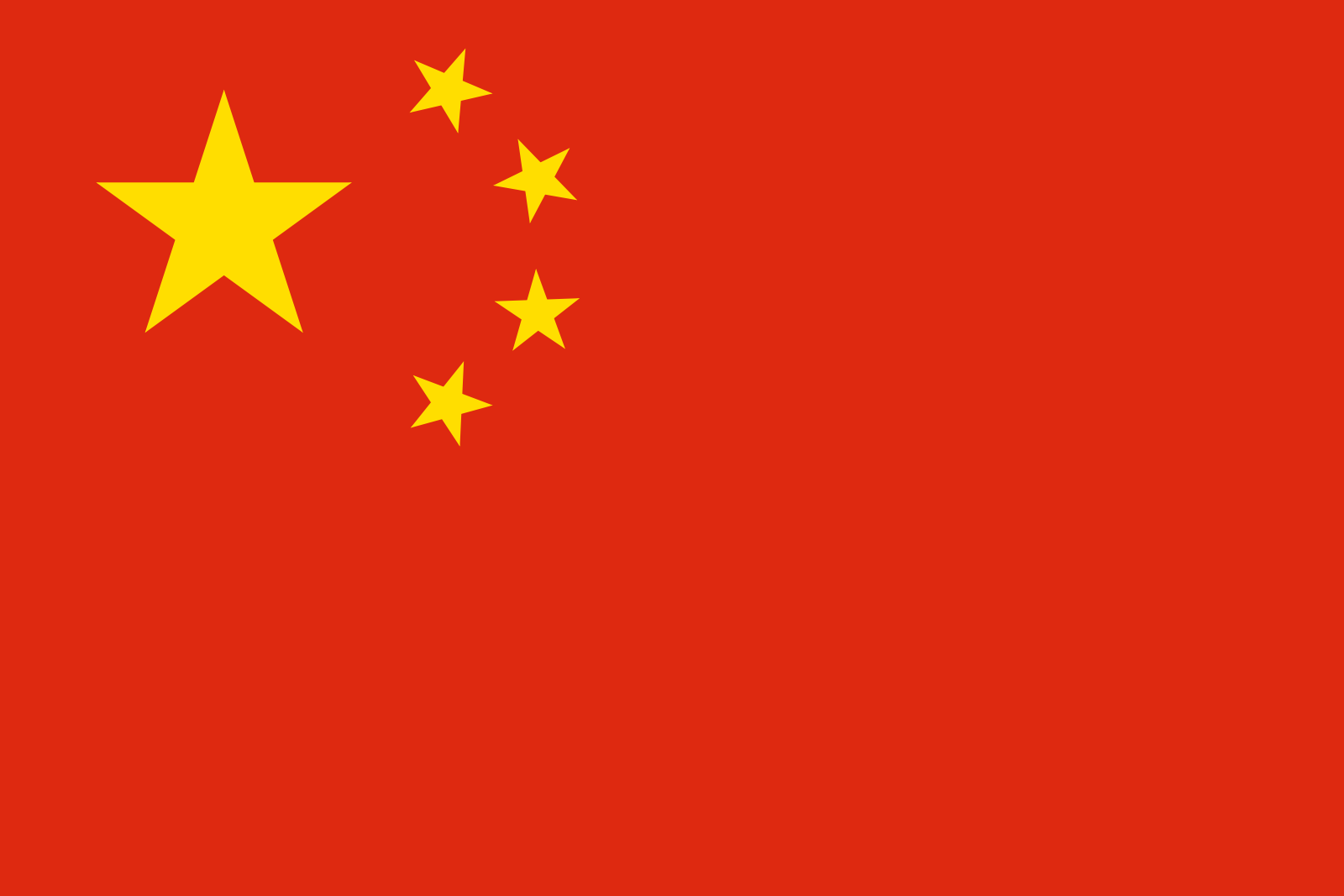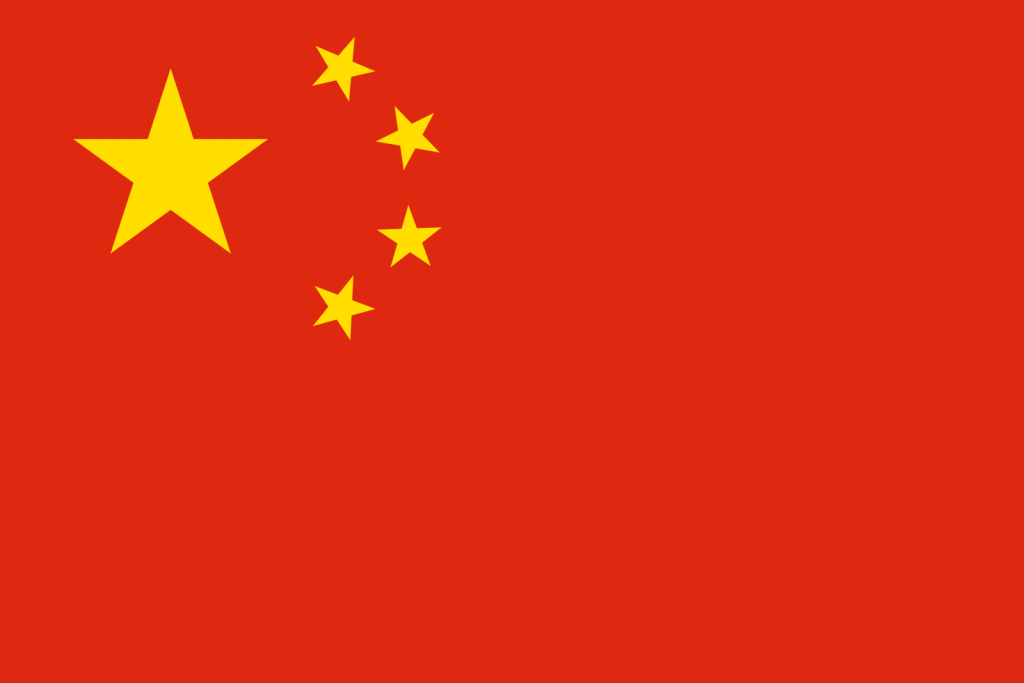China

One of the oldest civilizations in the world, responsible for many major inventions such as the compass, paper, banknote or gunpowder.
The video of our visit to China
A disturbing experience, and very powerful.
Where is China?
Its flag:
General data
– Surface : 9,596,961 km² (17.5 times the size of France).
– Population : 1.37 billion inhabitants (20 times the population of France).
– Capital : Beijing (Pékin).
– Head of state : Xi Jinping (since March 2013).
– Language : Mandarin, but also eight main dialects with their variants.
– Ethnicities: 56, each with its own language. Han (92%), Zhuang, Hui, Uygur, Miao, Yi, Tibetans, Uighurs…
– Change : the yuan. 100 Yuan = 15.22 €
– Average life expectancy: 72 for men, 75 for women.
– Illiteracy: 5 %.
– Jet lag : + 6h in summer, + 7h in winter.
– Some sites listed as World Heritage by Unesco: The great Wall of China ; the Imperial Palace in Beijing; the imperial tombs of the Ming and Qing dynasties in Beijing; the Yungang Grottoes; the giant panda sanctuaries of Sichuan; Shilin the stone forest; and many more…
Economy
In 20 years, from 1985 to 2005, the socialist economy fell into capitalism. GDP per capita is multiplied by 5.
China continues to break its own records, so much so that it is now the world's second largest economy. It is the world's largest producer of pigs, sheep, goats, wheat, rice, tea, cereals, fruits and vegetables and cotton, the second largest producer of corn, rubber, wool...
The country consumes 20% of the world's food production but has only 9% of agricultural land. Hence the need for China to invest internationally by leasing agricultural land in Argentina or Ukraine.
Since the late 1970s, foreign companies are encouraged to invest on Chinese soil, with the opening of “special economic zones”.
– China is now the leading investor in Africa through industrial projects, schools, hospitals, roads and ports.
On the other hand, economic development is also synonymous with increasing inequalities between the poor regions of the interior and the rich regions of the coast. China therefore remains a very poor country.
Human rights
Abolition of re-education through labor camps - the laogai -, relaxation of the law on one child, or even reform of the status of rural workers: the measures announced by the new President Xi Jinping could even suggest an improvement.
But the NGOs are formal, the regime remains still as repressive. Dissidents are still placed under close surveillance, if not imprisoned.
Internet is also very controlled and access to sites like Google, Facebook or Twitter is prohibited.
Finally, the death sentence remains massively applied, even if here again, the leaders announced a “step-by-step” reduction in the number of crimes punishable by death.
Cuisine
A wide culinary variety
The dishes are very varied in China!
Given the size of the country, there are necessarily great differences also according to the regions.
We are talking about four great culinary traditions (Beijing – Guangzhou – Shanghai – Sichuan), and we distinguish the cuisine of the North, based on wheat, from that of the South, where rice predominates. Traditionally, the North is said to be salty, the South sweet, the East rather sour and the West spicy.
Gastronomic walk
Some regional examples
- In Beijing and throughout the Yellow River region, the dominant presence of wheat is found in the form of pancakes, filled pancakes, donuts, ravioli, noodles and pasta.
- In Shanghai and the Lower Yangzi region, the proximity of the sea gives pride of place to seafood: crabs, crustaceans, smoked carp, eels… The locals also greatly appreciate vegetables, bamboo shoots, soy sprouts, lotus roots cut into slices,…
- Au Yunnan finally, do not hesitate to taste the “noodles over the bridge” (guoqiao mixian), boiling chicken soup in which you cook raw meat, vegetables and rice noodles yourself.
Drinks
Tea : The quintessential Chinese drink. The Chinese mainly drink green tea (lucha).
Beer : Beer, pijiu (pronounced “pitio-ou”) is also a drink particularly loved by the Chinese.
Culture
Martial Arts
China is the richest martial arts hotbed in the world. Practiced for health, pour self defense, for improvement witty or for all three, Chinese martial arts are considered an integral part of Chinese culture. Kung Fu should lead to the improvement of the body as well as the mind.
Calligraphy
Calligraphy (shufa) is considered one of the four major artistic disciplines, along with painting, poetry and music.
Learning to read and write
To write Chinese, we use ideograms: they are kinds of “drawings”, and each one means a word or an expression.
How many ideograms officially? Nearly 60,000 for some scholars… In fact, 3,000 to 4,000 ideograms in common use. Very early on, children learn to memorize them, pronounce them and understand their meaning. There are then thousands of lines of handwriting, to learn the stroke order (from 1 to 30 strokes) for each character and its structure.
Geography
China is large: by the number of inhabitants, the vastness of the territory, the variety of climates and ethnic groups, the differences in relief... It is the third largest country in the world in area – after Russia and Canada. It represents a quarter of the area of Asia.
So inevitably, this great country has common borders with many other countries: Mongolia, Russia, India, Myanmar (formerly called Burma), Kazakhstan, North Korea, Vietnam, Nepal, Kyrgyzstan, Pakistan, Bhutan, Laos, Tajikistan, Afghanistan.
It is a country mountainous : five-sixths of the land is more than 500 m above sea level. And the Tibet area dominates at an altitude of 5000m!
There are also some very great rivers : for example the river Yangzi, "Blue River" is the largest Chinese river. It has a total length of 6,300 km, it is the third in the world after the Amazon and the Nile.
Jeux
The taste and the practice of games are very widespread in China: chess, dice, cards, dominoes, billiards, lotto, mah-jong, races, cricket fights... The games are very varied!
Religions and beliefs
Difficult to talk about religions in the Chinese world. It's more about philosophies, ways of life and superstitions. China has developed its own religious movements from the three doctrines (Buddhism, Taoism, Confucianism) associated with popular beliefs and local superstitions.
The principle of yin et du yang is very important in China. This is how they see things...
Since Antiquity, two principles have governed the proper functioning of the Universe: a principle yin (shadow, cold, humidity, woman, moon, darkness, etc.), a principle which (heat, man, sun, etc.). They complement each other and work for the smooth running of the Universe.
Thanks to backpacker for all this info!

